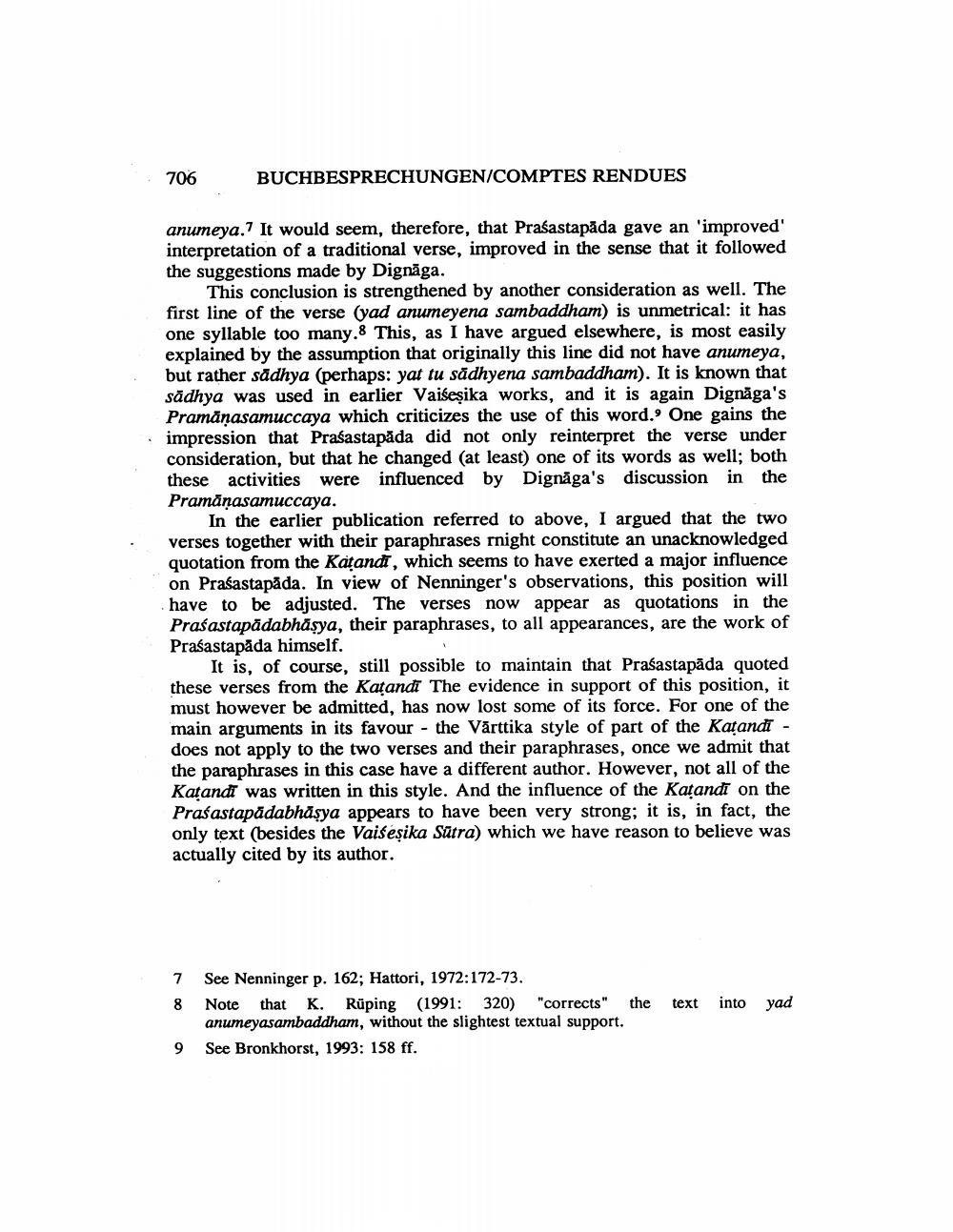________________
706
BUCHBESPRECHUNGEN/COMPTES RENDUES
anumeya." It would seem, therefore, that Prasastapāda gave an 'improved' interpretation of a traditional verse, improved in the sense that it followed the suggestions made by Dignaga.
This conclusion is strengthened by another consideration as well. The first line of the verse (yad anumeyena sambaddham) is unmetrical: it has one syllable too many.8 This, as I have argued elsewhere, is most easily explained by the assumption that originally this line did not have anumeya, but rather sadhya (perhaps: yat tu sadhyena sambaddham). It is known that sadhya was used in earlier Vaišeṣika works, and it is again Dignaga's Pramanasamuccaya which criticizes the use of this word. One gains the impression that Prasastapāda did not only reinterpret the verse under consideration, but that he changed (at least) one of its words as well; both these activities influenced by Dignliga's discussion in the Pramanasamuccaya.
In the earlier publication referred to above, I argued that the two verses together with their paraphrases rnight constitute an unacknowledged quotation from the Katandi, which seems to have exerted a major influence on Prasastapāda. In view of Nenninger's observations, this position will have to be adjusted. The verses now appear as quotations in the Prasastapadabhāṣya, their paraphrases, to all appearances, are the work of Prasastapāda himself.
It is, of course, still possible to maintain that Prasastapāda quoted these verses from the Katandi The evidence in support of this position, it must however be admitted, has now lost some of its force. For one of the main arguments in its favour the Varttika style of part of the Katandi - does not apply to the two verses and their paraphrases, once we admit that the paraphrases in this case have a different author. However, not all of the Katandi was written in this style. And the influence of the Kaṭandi on the Prasastapādabhäşya appears to have been very strong; it is, in fact, the only text (besides the Vaiséşika Sutra) which we have reason to believe was actually cited by its author.
9
-
7
See Nenninger p. 162; Hattori, 1972:172-73.
8 Note that K. Rüping (1991: 320) "corrects" the text into yad anumeyasambaddham, without the slightest textual support.
See Bronkhorst, 1993: 158 ff.




